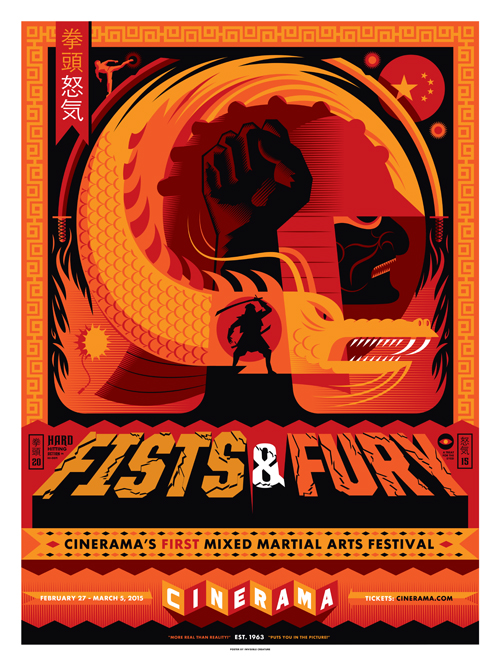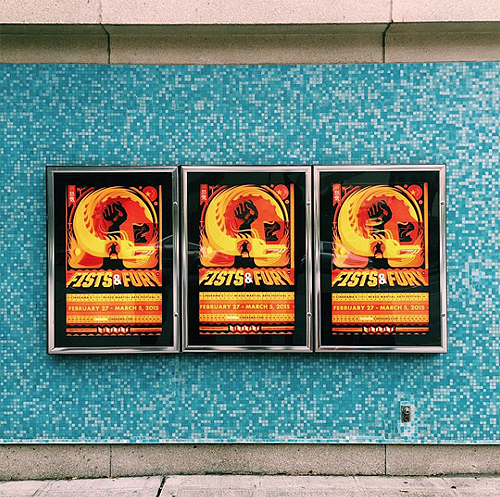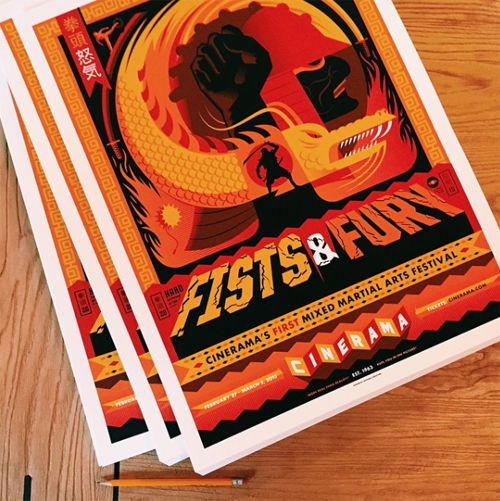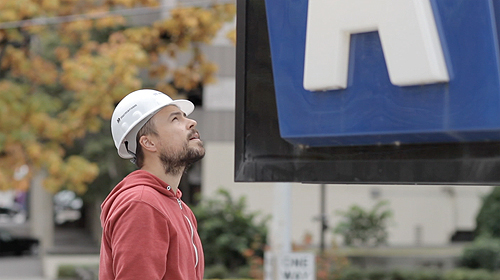
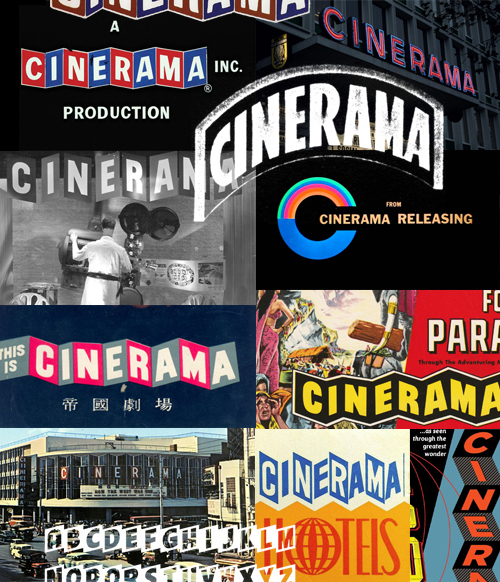
When we moved to the Capitol Hill neighborhood of Seattle in 2001, Cinerama immediately became our go-to theatre. The nostalgic 60's architecture and charm, the massive screen, the curated collection of movie props behind glass in the lobby, the chocolate popcorn - and yes, even that logo ... it had everything a designer/cinephile could want. From waiting in lines for Star Wars prequels (I wish I had those hours back) to seeing a film that sorta changed my life - it was our destination for the movies.
Fast forward 12 years - December of 2013 to be exact. Imagine my reaction when friend and Vulcan Marketing Director Josh Lackey asks us if we'd like to take part in their upcoming MAJOR technology and seating renovation that included ... well, taking Cinerama's giant 200' x 30' blank cream-colored brutalist exterior walls and covering them with art - art that undoubtedly would forever change the landscape of that busy intersection of 4th and Lenora in downtown Seattle.
I was shaking in my boots at the thought - Would that ruin the legacy of the theatre - and Cinerama as a whole? Would Seattleites hate looking at it? Worse yet, would moviegoers hate it? But before he could finish explaining the project brief, I was wholeheartedly in. Scared out of my mind - but in.
First, a little Cinerama 101 ...
Above: Staring at the completed mural - and a tiny example of Cinerama's iconic logo, signage, theatre architecture, one-sheets and various ephemera above. Way more eye candy here.
Below: A miniature of Cinerama's widescreen (and groundbreaking) 3-projector technology, developed by Fred Waller in the late 1940's and made commercially viable by Lowell Thomas in 1952. There are only 3 Cinerama theatres left in the world. Read more about Cinerama's amazing history here.
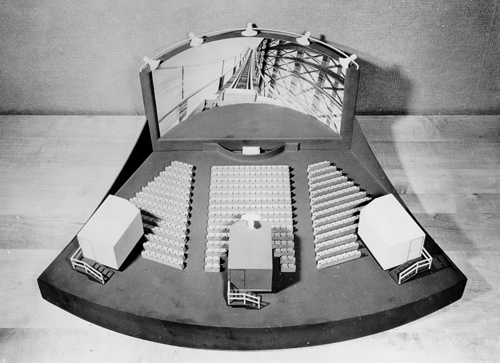
Below: Construction began on the Martin Cinerama Theatre in 1963, a year after the World's Fair came to town. It immediately became a cultural icon and destination for Seattle locals and tourists alike. However, thanks to urban sprawl and the rise of giant theatre multiplexes, ticket sales began to drop in the 1980's and 90's. Entrepreneur and philanthropist Paul Allen purchased the theatre in 1997 and began a series of renovations starting in 1999.
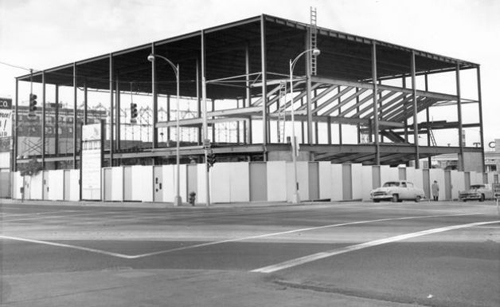
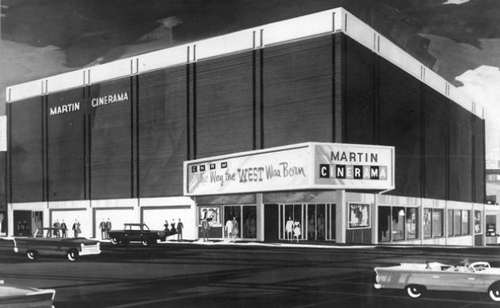
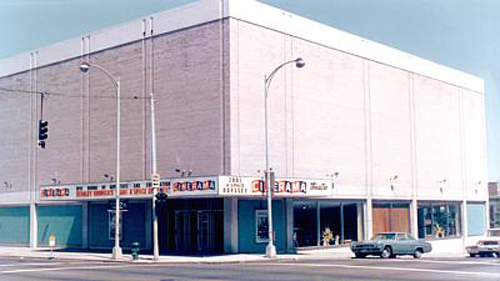
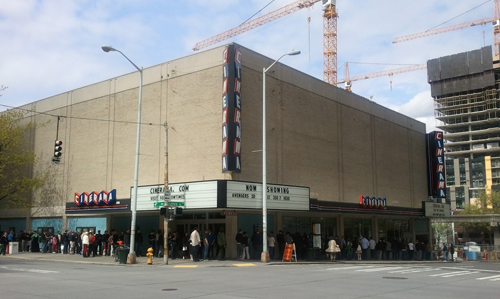
The blank canvas ... all 200 x 30 square feet of it ...
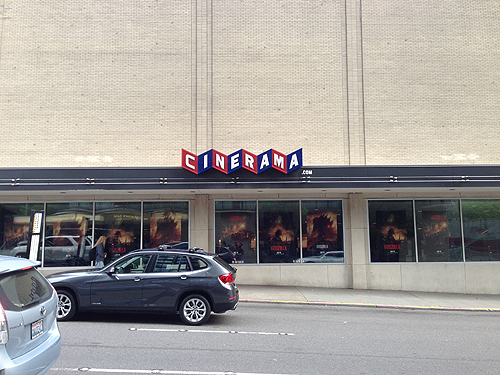
We presented Vulcan and the team at Cinerama with 3 sketched ideas. My design goals were simple - but maybe not so easy to pull off: I wanted to acknowledge and respect Cinerama as a whole - the historic technology, the beauty and charm of the era, the visual design of Cinerama (from the architectural significance of their theatres worldwide to the countless amazing ephemera produced over the last 50 years) and of course my beloved hometown of Seattle and the corner that this brutalist structure resides on - 4th and Lenora. But it was also important that we didn't dwell too much on the past. After all, this was a multi-million dollar renovation that pointed towards the future. The key was to aim towards what was next, while paying homage to what has come before.
Another important thing for me was recapturing that excitement of going to the movies. I obviously wasn't around in the early part of the century - or mid century for that matter - but I love the footage of movie premiers during those years ... it was an event! You'd wear your best outfit, grab that special someone, buy something at the concession stand and thoroughly enjoy a night out. I realize much of that is gone now, but there was something about this opportunity. We could, at least in theory, bring some of that charm and excitement back to movie goers.
The team at Vulcan landed on one of our concepts: A visual scattering of cinema's greatest genres: Action, adventure, horror, sci-fi, fantasy and more. All integrated and seamlessly woven into each other like a story - with one genre leading to the next.
The color scheme: I wanted to stay true to Cinerama's classic red and blue. I added a lighter blue that matched the lower portion of the exterior's tile walls - as well as a few darker hues of the original 2 colors.
One important design element that I wanted to work into the mural was the angular lines of the Cinerama logo. In our original sketch, we actually had a cropped version of the wordmark visible as well - with the art woven throughout and around the type. That aspect of the mural ended up getting cut at the last minute, but we kept the overall angles of the mark visible.
Approved sketch below. As with most of our concepts and sketches, the final art evolves quite a bit from it's initial drawing - but the core composition remains.
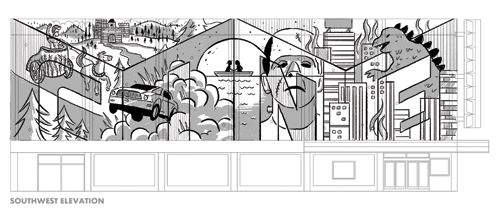
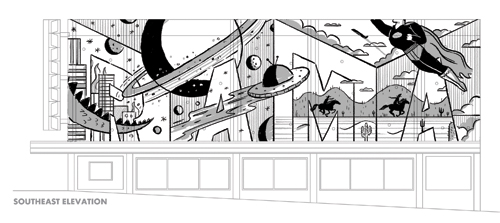
Below: Architectural blueprints from Boora Architects, 1998. We used these drawings as a template for our work. One of my favorite things about the structure's brick facade are the many small LED lights sporadically placed along each wall. I've always enjoyed that design element at night and was excited to see those lights create a subtle visual effect underneath our completed art. The result is a nice addition to the mural at night - further emphasizing the excitement and 'event' aspect of going to the movies.
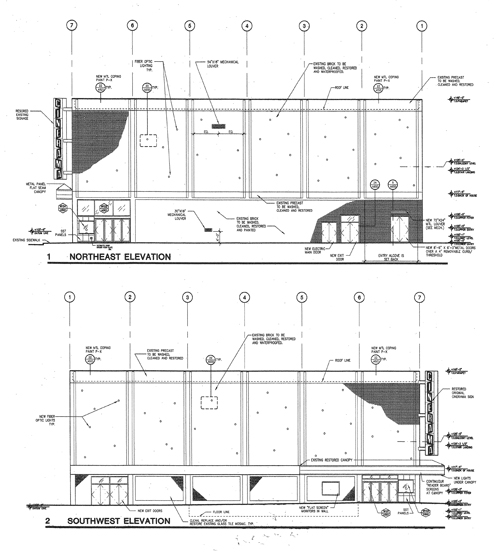
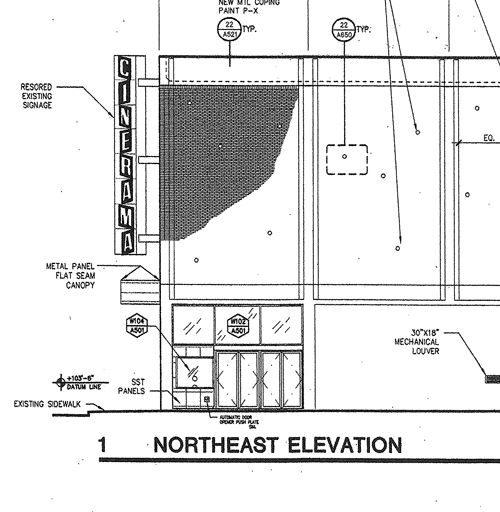
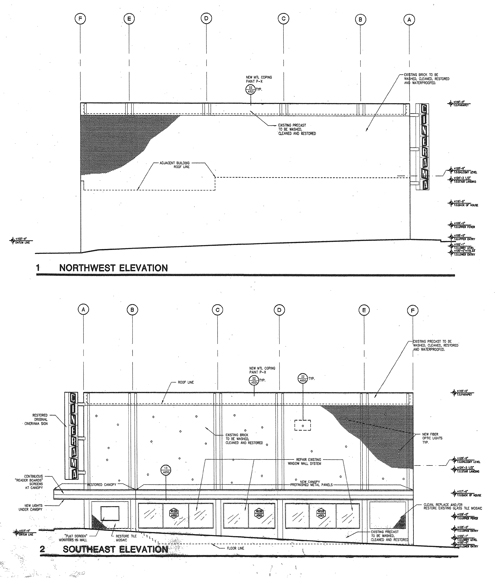
Below: All cleaned up, refined and colored. The finished mural and the grand re-opening of the greatest theatre on Earth. Photography by the great Benjamin Benshneider. Scroll (way) down to see the completed vector art. Also available as a print.
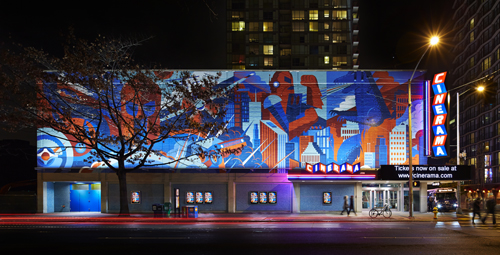
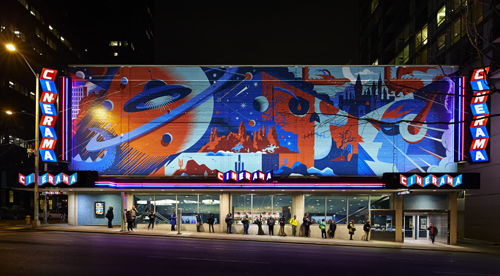
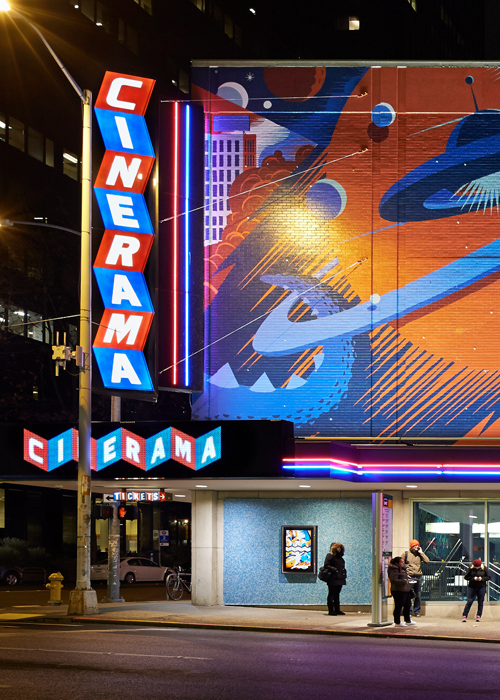
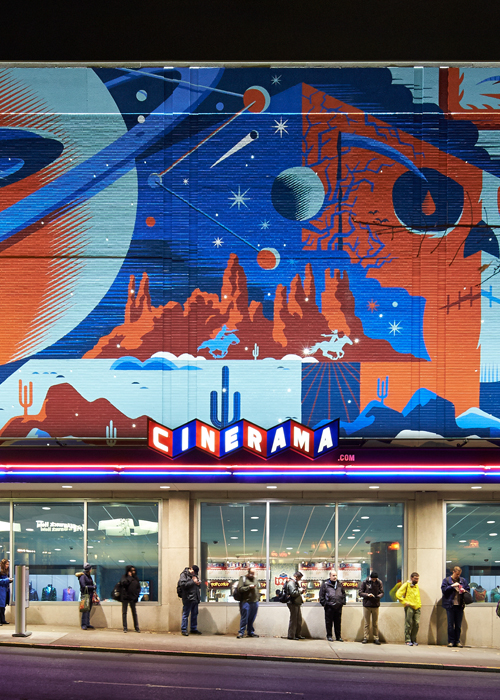
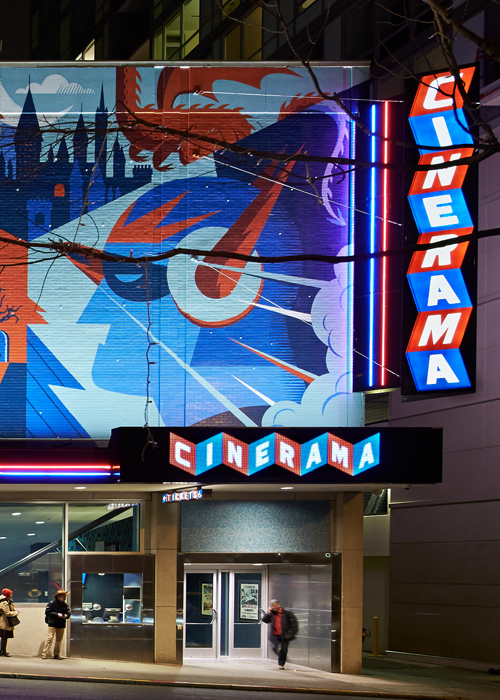
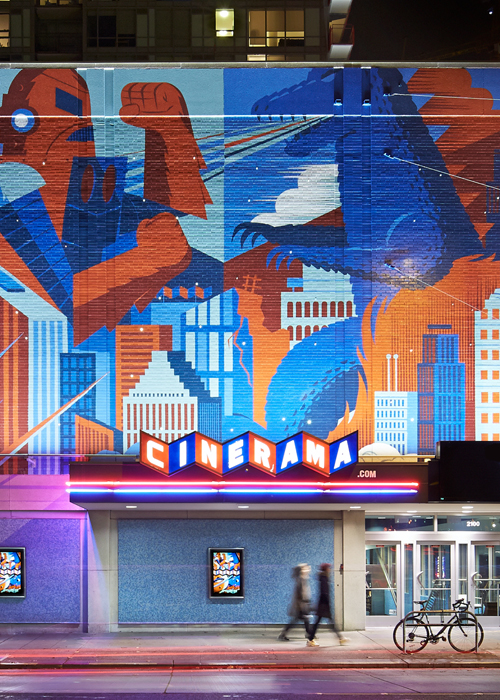
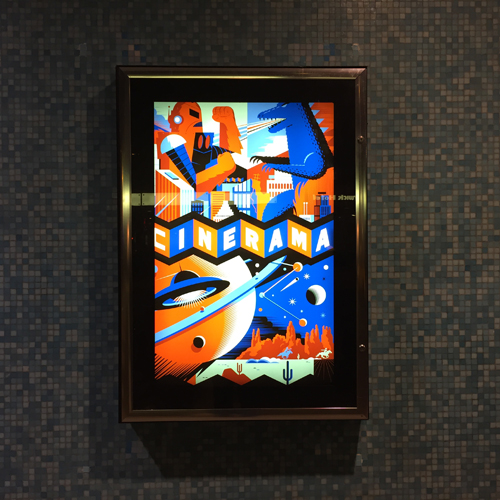
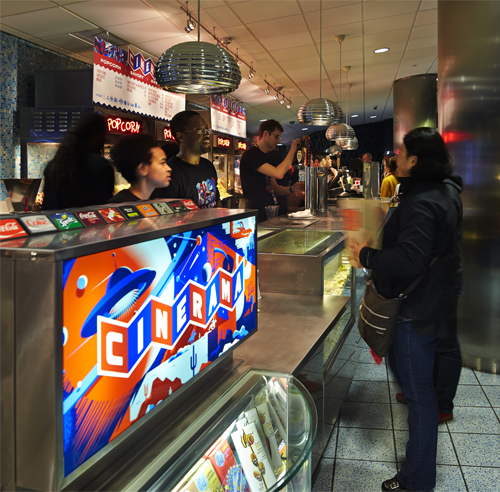
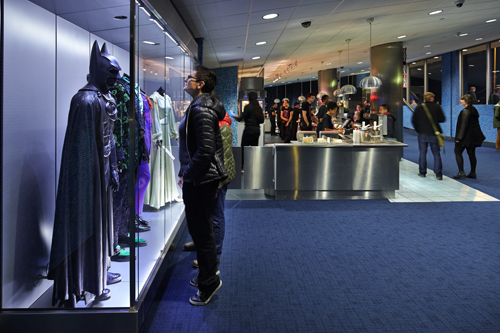
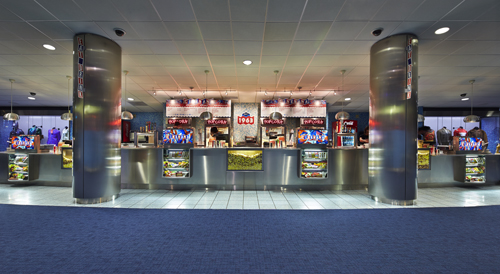
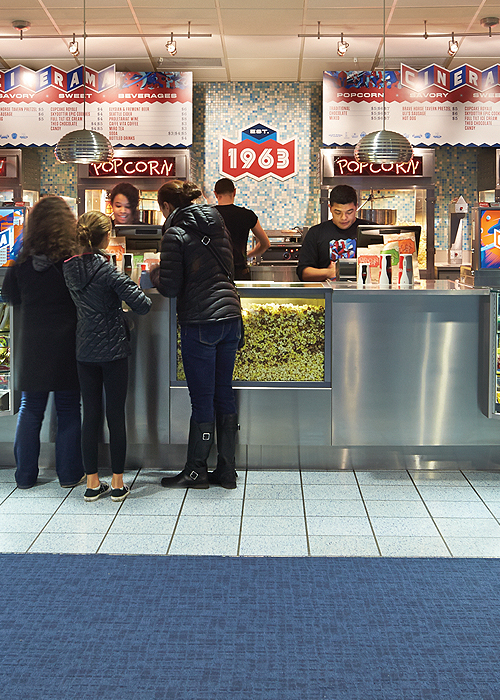
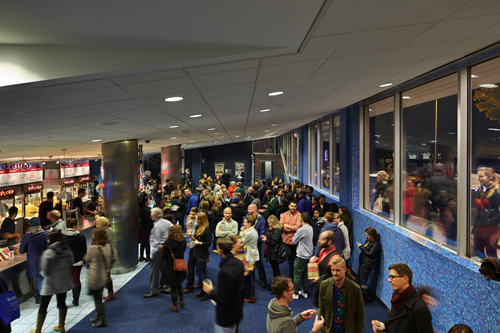

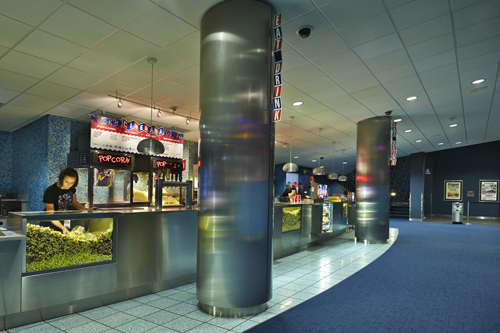
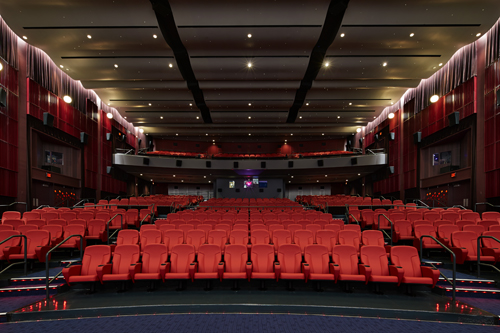
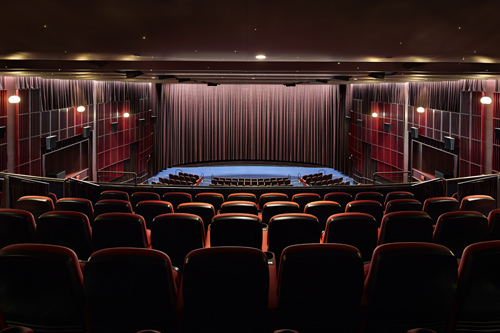
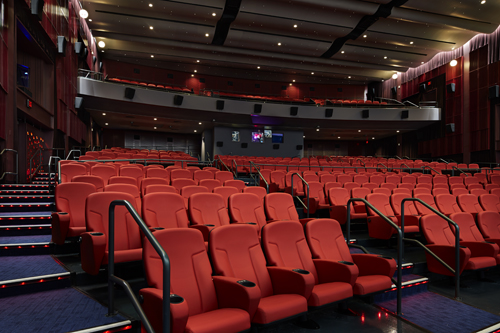
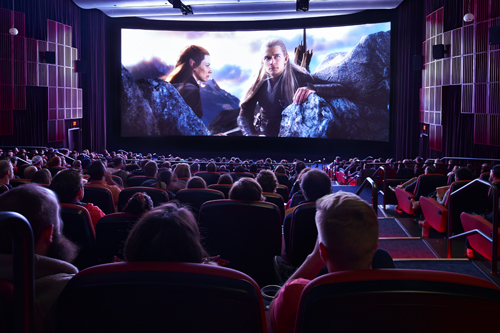
The reaction to the mural was overwhelming - and ended up setting the stage for an overall Cinerama identity overhaul. That translated into interior signage, employee T-shirts, business cards (Duplexed, de-bossed and features both red and blue edge printing on each card, printed by the pros at Evolution Press in Ballard), silk-screened posters and lots of upcoming merchandise ...
A few notable articles surrounding the renovation can be found here, here and here.
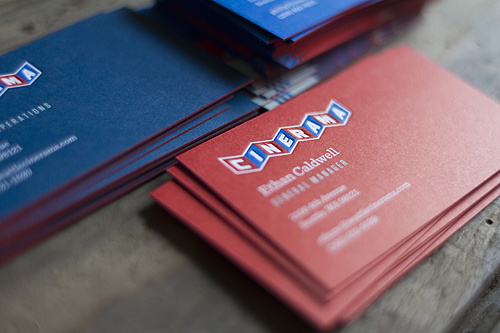
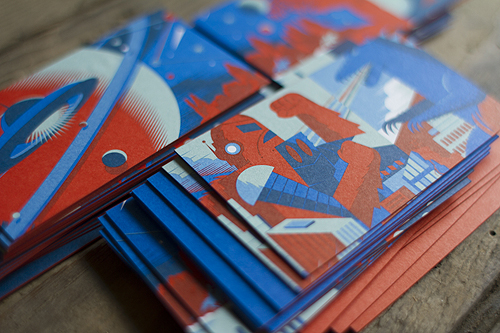
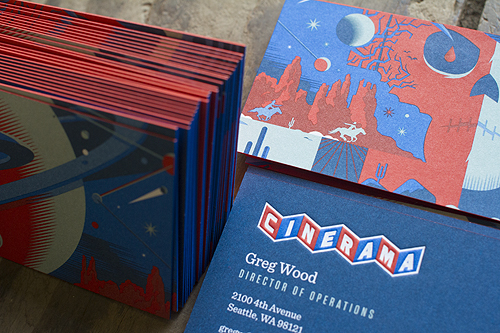
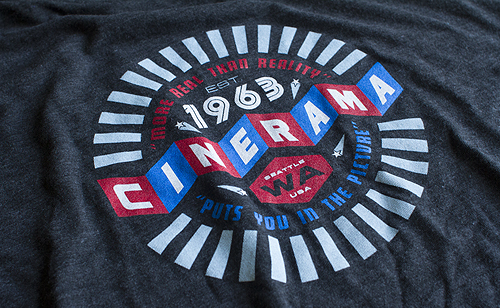
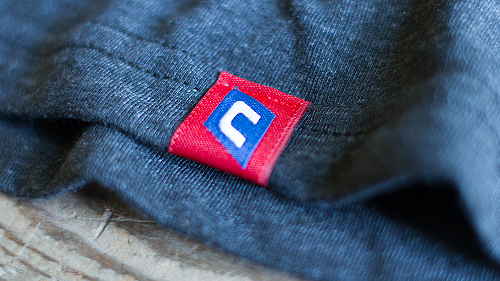
Below: The making of the mural - featuring our partner Don Rockwell and his band of brothers (Don and his all-star crew were able to start and finish the mural in less than a month) ... Btw, watch Sign Painters: The Movie. The film features a few members from Don's team.
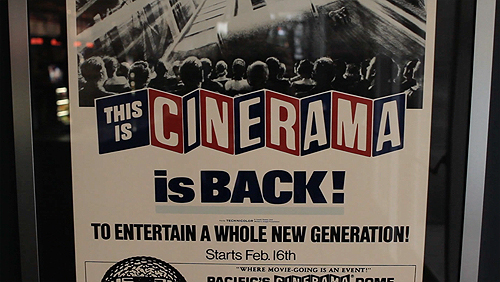
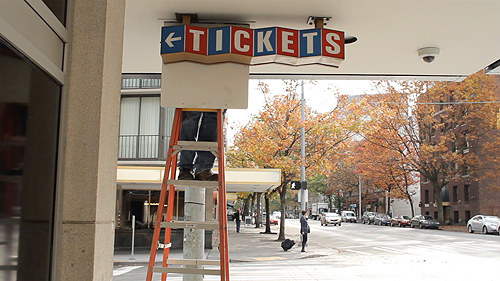
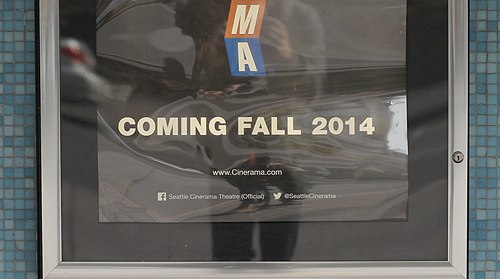
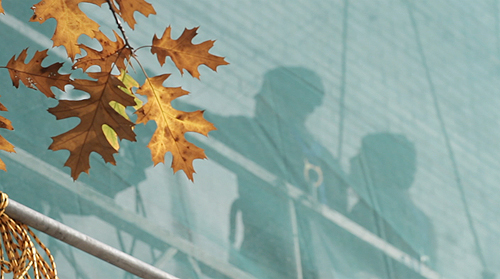
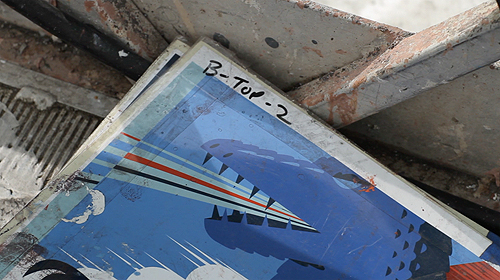
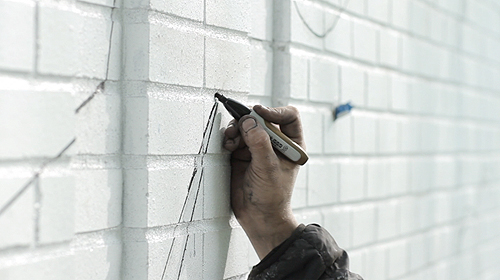
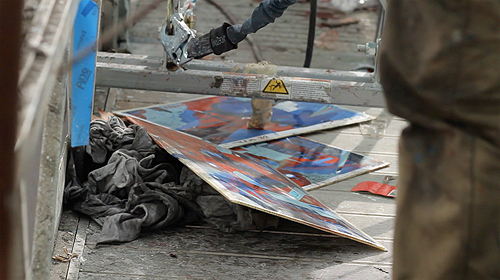
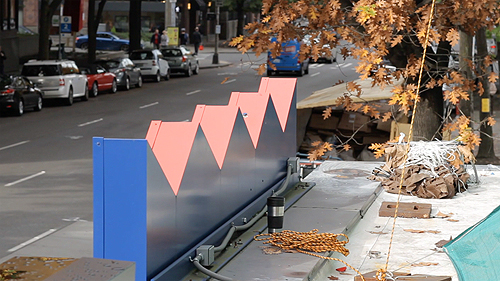
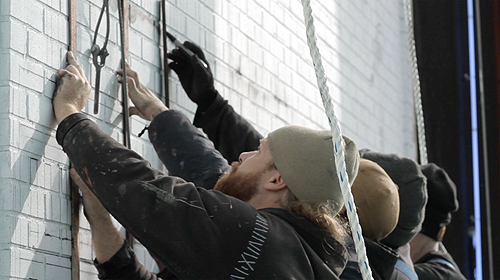
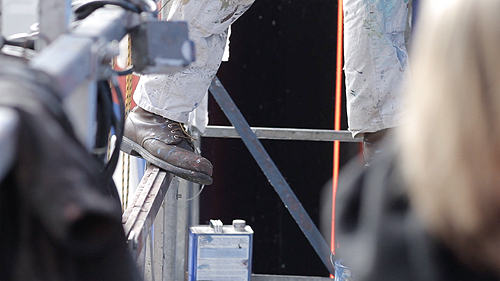
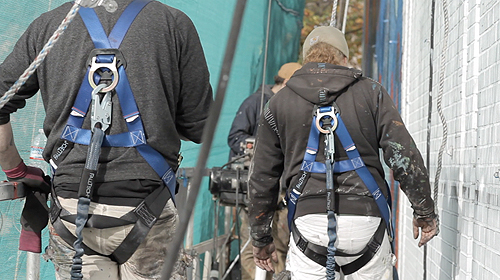
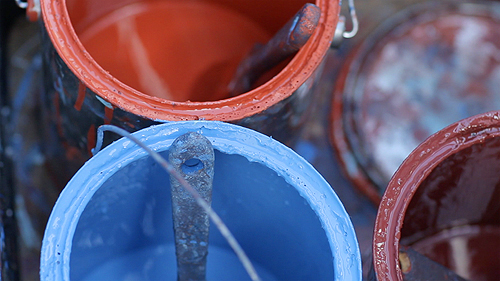
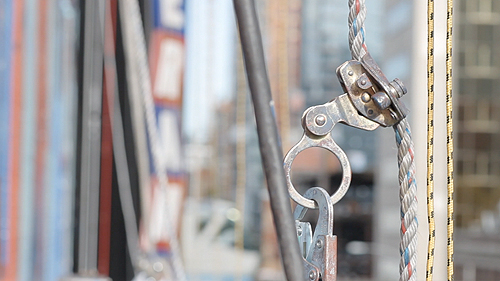
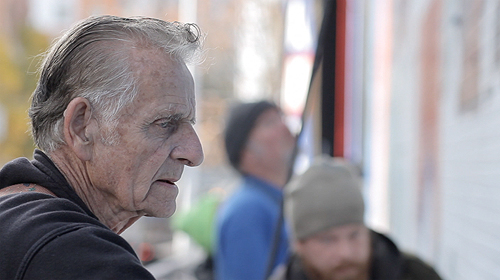
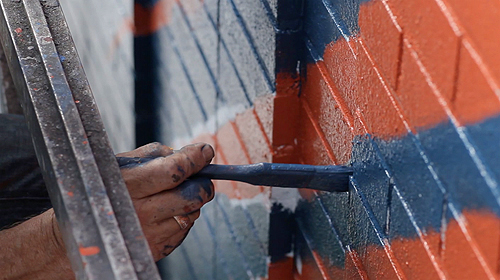
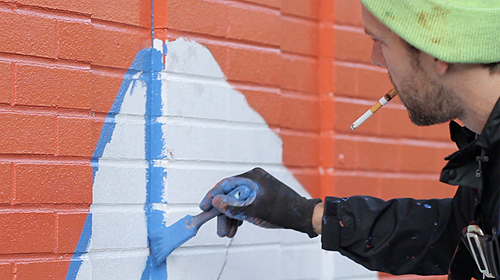
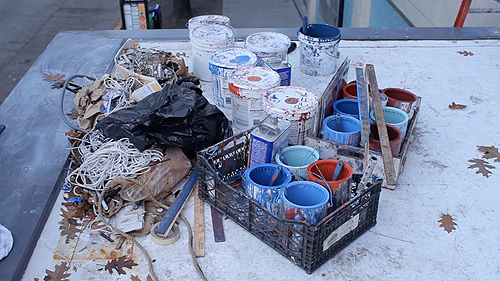
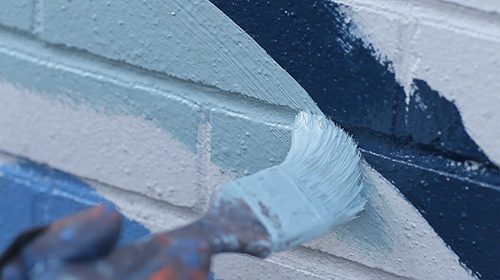
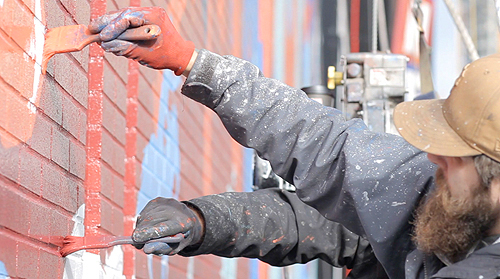
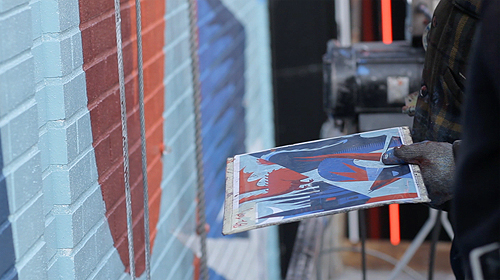
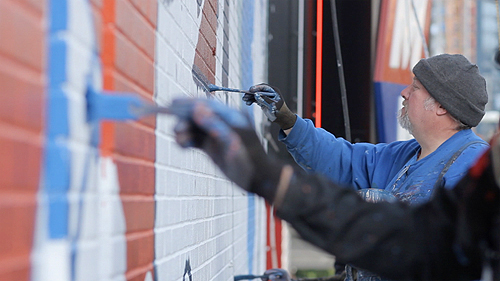
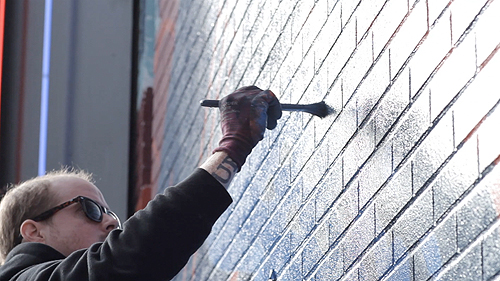
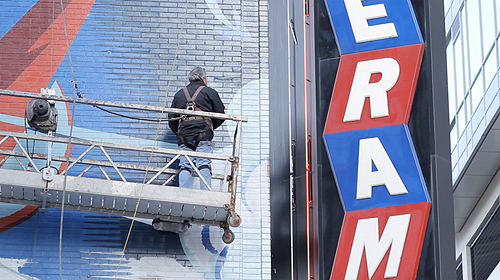
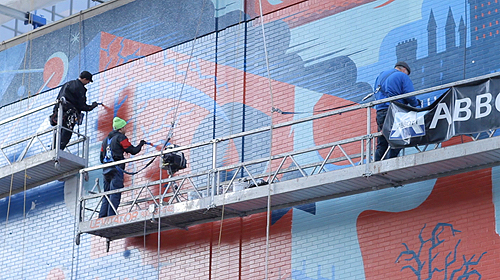
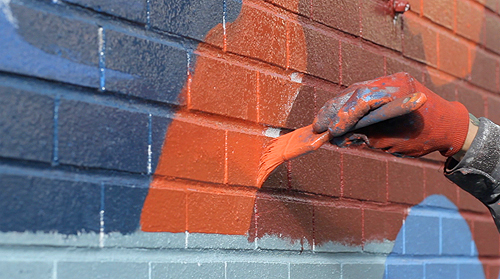
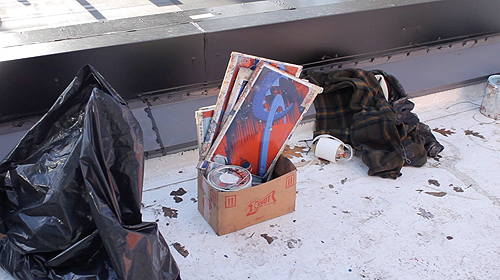
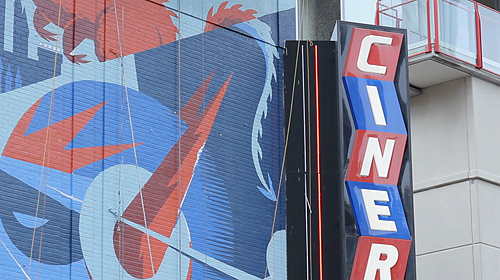
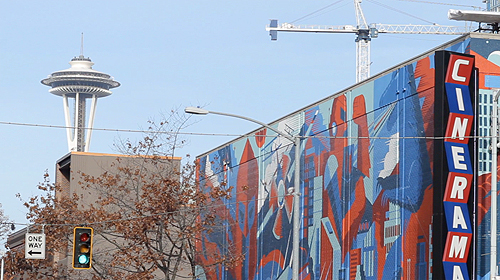
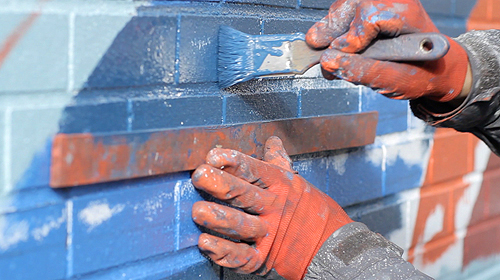
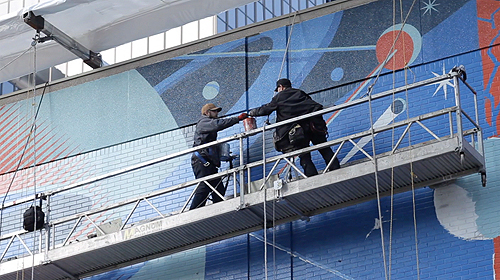
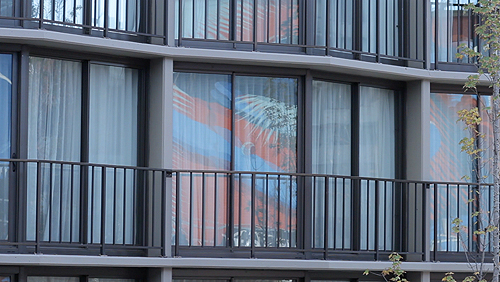
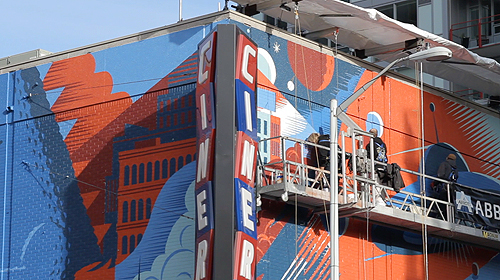
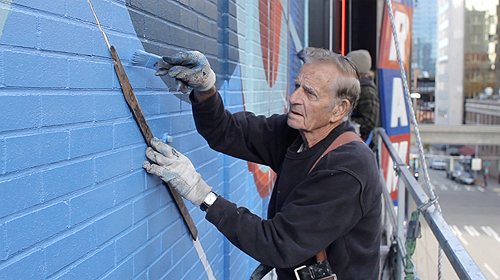
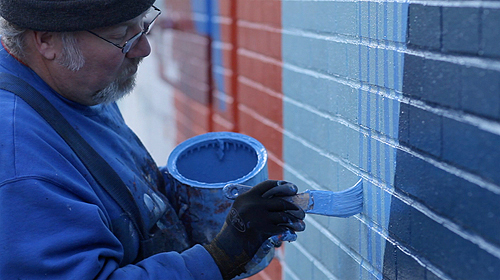
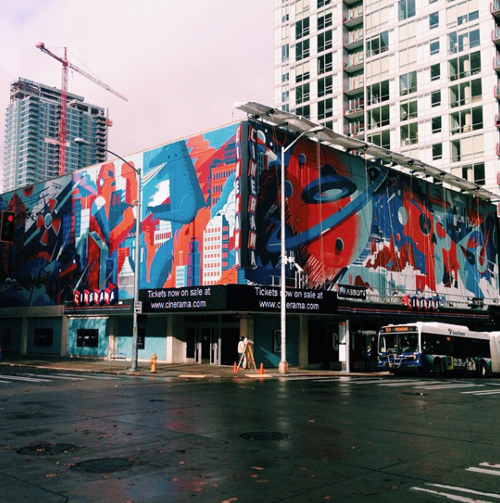
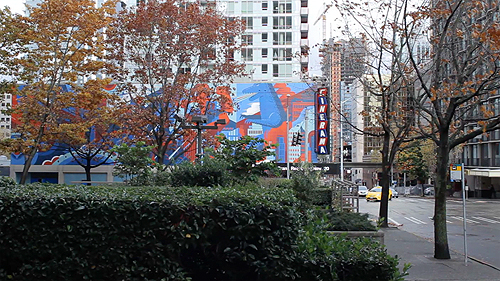
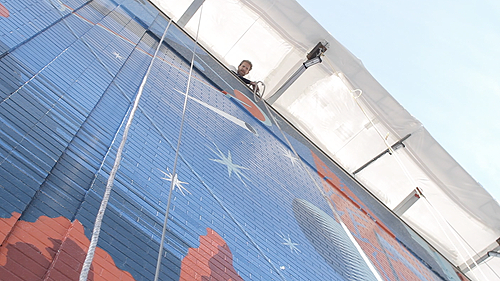
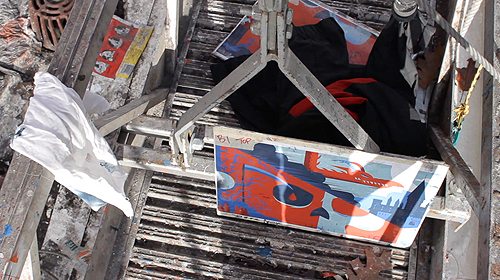
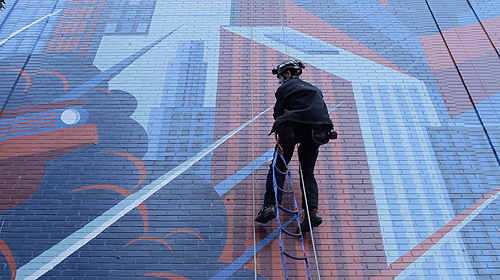

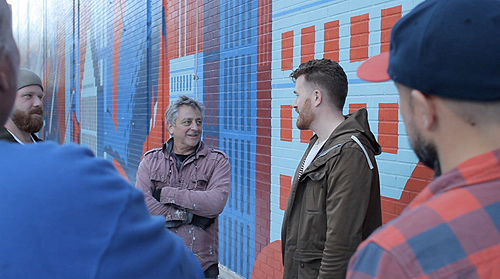
Below: The Don's - Rockwell & Clark ...

Below: The brainchild behind the entire mural project - Josh Lackey. This was (and is) a career highlight for me. I have Josh to thank for all of this.
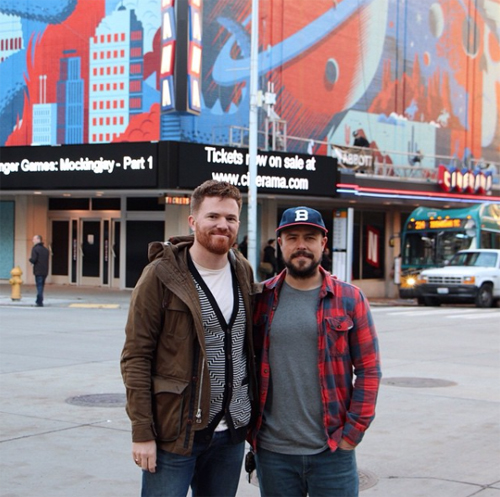
Don Rockwell presented IC with this amazing framed shadow box of used paint brushes, painter-worn gloves and on-site reference art. We have it hanging proudly in the shop.
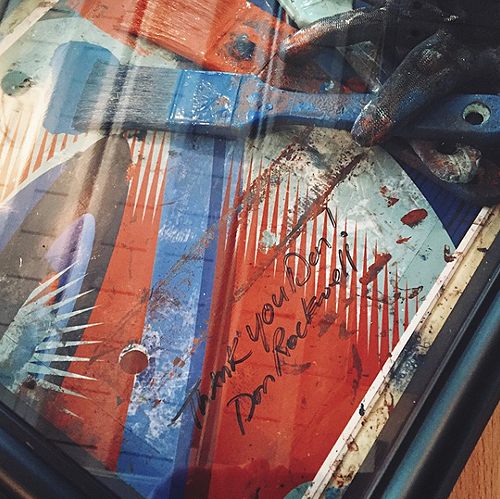
We also have a limited amount of prints commemorating the renovation from last winter. 100 were given out to Cinerama patrons and we have just under 40 left in our shop. Grab one here.

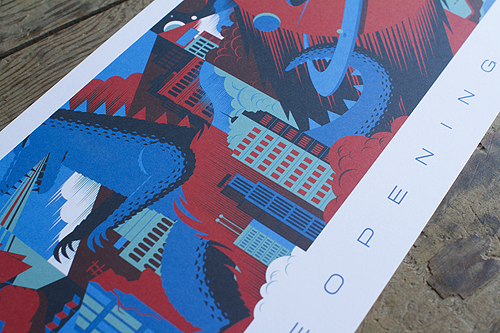
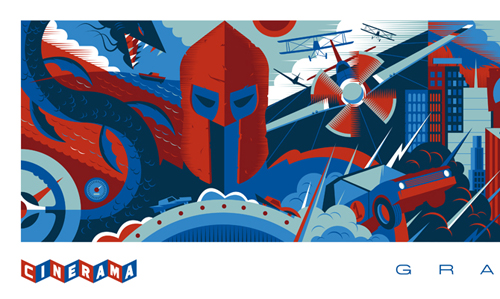
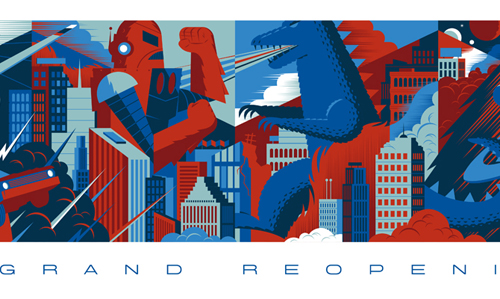
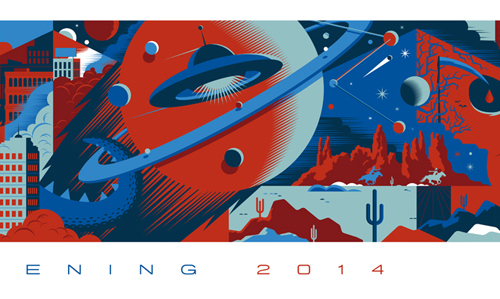
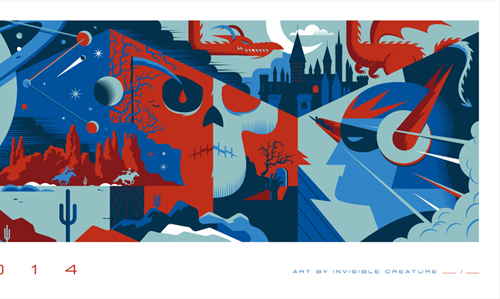
Shortly after the finished renovation in November, we were asked to design and illustrate the poster for Cinerama's first mixed martial arts festival, aptly titled Fists & Fury. Screen-printed by the pros at Vahalla and available in the shop now.
